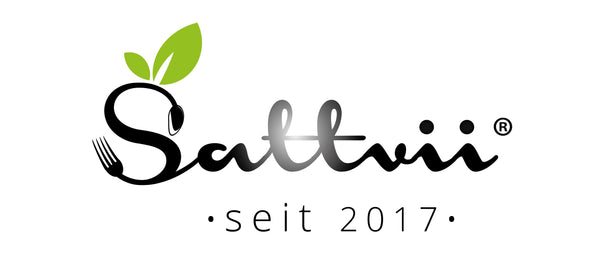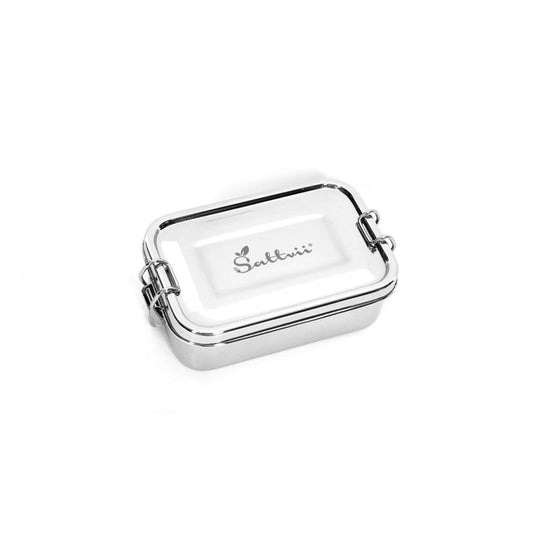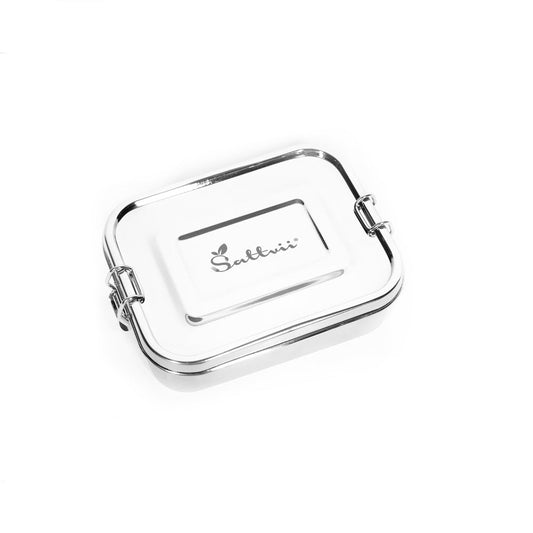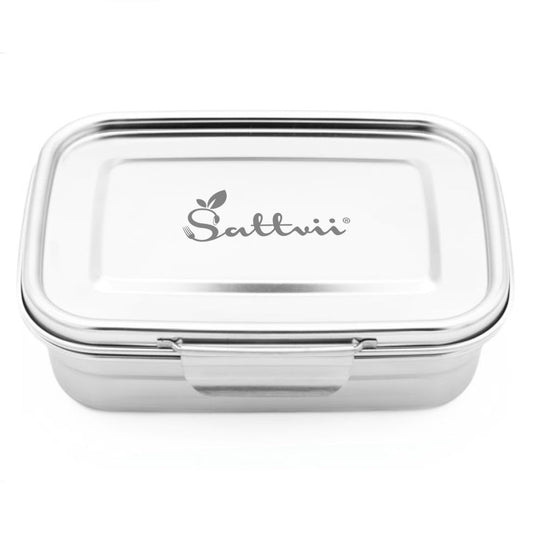The selection is huge: There are bread boxes for our children in different sizes, made of different materials, with different closures and in all kinds of designs.
Lunch boxes are "in". In recent years, they have shed their dusty image through many innovations. In addition, more and more parents are trying to live sustainably. They look for healthy, recyclable products that are still of high quality and practical. This is one of the reasons why disposable packaging such as plastic bags is fortunately "out". Bento boxes made of stainless steel are very trendy here.
Also interesting:
What exactly is behind plastic?
Which lunch box is best for my child?
Why a "lunch box" at all?
We parents face the same problem every morning (or the night before): What do I put in my child's lunch box? It should not only be healthy, it should also taste good and, well, it should also look appetizing. And preferably not the same thing every day. Monotony clearly inhibits the desire for the important snack.
But watch out: If the lunch box comes back home half full, it might not be because of the selection. Maybe there was just too much in it! The size of the portion should depend, among other things, on whether your child has already eaten their first, nutritious breakfast at home or how hungry they are in general in the morning.
The most important components for the right snack in kindergarten are a "main meal" such as wholemeal bread. Plus fruit and veggies. Not to forget a daily surprise: A few small pretzels, a (sugar-free) biscuit, rice cake pieces or a piece of cheese.
What does the bento box have to be able to do?
- It must not have any sharp corners or edges
- It must be easy for the little ones to handle - in other words, quick and easy to open and close. However, it must not open by itself in the backpack.
- different foods should find space in it and not be able to mix.
- It has to be stable. At home and in kindergarten it can happen that it falls down. It must not be a total loss right away.
- It should be durable and sustainable these days.
- Plastic-free, i.e. low in pollutants. We owe that to our children.
- After all, it has to be easy to clean. Ideally also in the dishwasher.
The stainless steel bento box - the all-rounder
Once the children's snack menu has been worked out and prepared, the real problem arises: How do I pack everything into the lunch box without everything getting mixed up, leaking, turning brown quickly - so on the way in colorful chaos arises in the kindergarten?
The lunch box must therefore be divisible and leak-proof. With the D-Lock series, you and your child are perfectly equipped for kindergarten.
The stainless steel box is not only very easy to open in the truest sense of the word with the clamp closure, it also keeps the desired order thanks to the individually usable dividers (Bento Box). No liquids or odors migrate from one box to the other. Also not in the backpack: Thanks to the silicone ring, these cans are protected against leaking.
The D-Lock bento box is lightweight and available in three sizes, with capacity of 550ml, 780ml and 1280ml.Ideal for small to large appetites and perfect for small kindergarten backpacks.
If you would like to give your offspring muesli, rice pudding or pudding, then the L-Lock Bento Box would be exactly the right solution. Due to the firm clip closure, this stainless steel box does not have a silicone ring and is therefore not leak-proof. But she fascinates with the "box in box" principle. With small inner cans, you can easily pack liquid snacks.
The L-Lock bento box is also available in different sizes.
Why stainless steel?
Plastic lunch boxes are light, versatile, cheap, decorated with pretty little pictures and they can withstand a lot. But, plastic can contain pollutants. These are mainly plasticizers, microplastic particles and the hormonally active BPA (bisphenol A). These substances can transfer to the contents of your lunch box. Manufacturers indicate that their products are "free of harmful substances". If you want to be on the safe side for you and your children, stainless steel boxes are the alternative.
Not only the interior of stainless steel has its advantages, its exterior too. Microorganisms don't stand a chance on the smooth surface. Studies have shown that bacteria die out faster on stainless steel than on plastic surfaces. Even if something has been forgotten in the stainless steel bread box and the box has not been opened for a long time, it can be easily cleaned again. No residue and no odors remain.
This ensures that the box does not release any harmful substances into the food or affect its taste or smell in an undesirable way.
Another advantage is that stainless steel bread boxes are designed to last. Whether in kindergarten or at home, the stainless steel bread box can withstand almost anything. It quickly slips out of your child's fingers and falls down - nothing can happen. In addition, it withstands high and low temperatures alike. Of course, it doesn't rust and it's 100 percent recyclable - which is particularly important when making a purchase decision these days. Stainless steel leaves no footprint in the ecosystem.
Cleaning made easy
Stainless steel is very easy to clean because of its smooth surface. Remove residue, rinse thoroughly under running water with a little washing-up liquid - done. In no time at all, this high-quality material is dry and ready for the next use.
The stainless steel bread boxes are also suitable for the dishwasher.
He who has the choice is spoiled for choice
Or not. Because actually, despite the large range of bread boxes in different materials, properties and requirements, everything speaks for stainless steel bento boxes. A classic that fits right into our times: Practical, indestructible, easy to care for and environmentally friendly.
.







